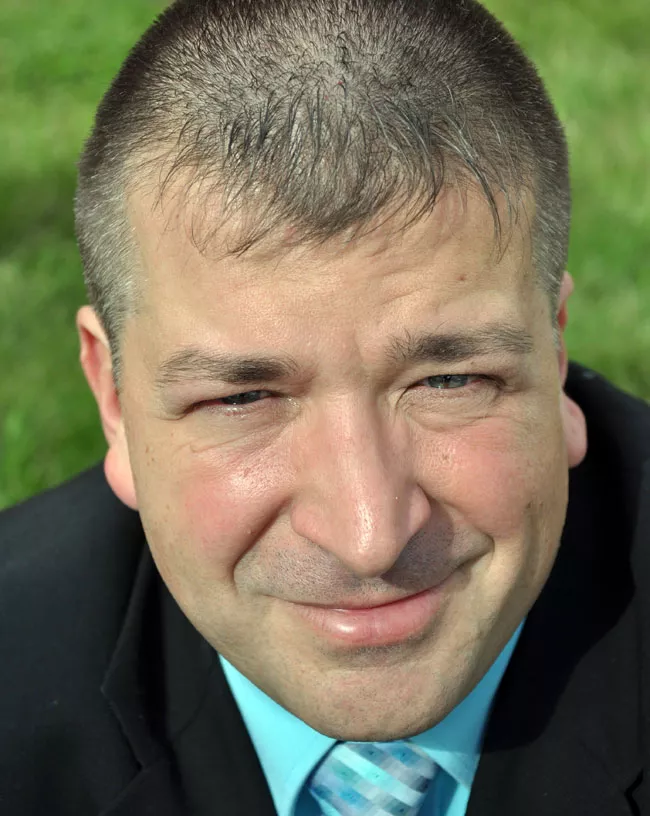UNBC spearheads birch bark canoe construction to commemorate Canada's 150th

In an effort to honour Prince George’s regional history and celebrate Confederation, UNBC chair and professor of Anthropology Dr. Michel Bouchard and Earl Henderson, UNBC First Nations Studies Métis instructor, are spearheading the construction of a full-sized birch bark canoe that’s set to begin in May 2017 at Two Rivers Gallery to commemorate Canada’s 150th anniversary.
It’s a partnership between Le Cercle des Canadiens Français de Prince George, UNBC and Two Rivers Gallery. Bouchard will be joined by university students who will help build the canoe, while school children and community members are being invited to witness the construction and learn of the past.
The canoe will be launched on July 1 to celebrate the 150th anniversary of Confederation.
To mark the debut of the project, Bouchard, who is also President of Le Cercle des Canadiens Français de Prince George, is launching his book Songs Upon the Rivers: The Buried History of the French-Speaking Canadiens and Métis from the Great Lakes and the Mississippi across to the Pacific at ArtSpace, (2nd Floor, Books & Co., 1685 – 3rd Ave.) on Tuesday, Nov. 15 at 7 p.m.
Representatives of the Cercle, Two Rivers Gallery and UNBC will be on hand to officially launch the new collaborative effort to commemorate Canada’s 150th.
“The birch bark canoe was an engineering feat developed by First Nations, adopted by the fur trade, and propelled competing companies across the continent to locales such as Fort George. The largest canoes could carry a few tons of cargo,” said Bouchard.
“These canoes navigated the rivers of the continent and men who worked tirelessly to paddle the canoes and their families would shape the continent, but their history has been largely forgotten. We want to revive this buried past and commemorate the Canadien, Métis, Iroquois and others who were vital to our past.”
Le Cercle is a non-profit community based organization whose goal is to promote the French language and culture in the city and bring together community members, French-speakers and others, to achieve this goal. The Cercle has been generously awarded funding from the Government of Canada (Heritage Canada) to bring Métis elder Marcel Labelle to Prince George to host the building of a birch bark canoe.
In 1867 Prince George was a prosperous fort surrounded by a thriving Lheidli T’enneh community and inside the fort the French language echoed. To the east, a new state would arise.
The goal of the project is to share the too often forgotten history of the region, while highlighting the role of the Canadien and the Métis in the history of the region, as well as recognizing the importance of the Lheidli T’enneh and the other First Nations of the region. At the time of Confederation, birch bark canoes would have plied the waters of this region, carrying furs and trade goods.
“The birch bark canoe was more than just a functional object,” said Carolyn Holmes, Managing Director of the Two Rivers Gallery. “It was an artistic expression and a feat of design and craftsmanship.”
Holmes hopes the community will visit the Gallery during the boatbuilding to witness the canoe take shape and to celebrate both the makers of the past and the creative individuals working on this project.
In addition to being an engineering feat and artistic creation, the canoe also had a spiritual element embedded in it, tying to ancestors and the land.
“The birch bark was the skin of the canoe and tied to a larger spiritual universe, which included the birch tree,” said Henderson, a Metis elder. “It was important to make an offering to the spirit of the tree for allowing us to use its skin for our canoes in a good way. This offering connected us to ‘all our relations.’”
In a few years following Confederation in 1867, the territory would join the new Canadian state as the province of British Columbia, but the fur trade would still flourish for a few more decades and the French-speaking Canadien, Métis and Iroquois inhabiting the forts of New Caledonia and British Columbia would continue to play a vital role in the region’s economy.
Henderson, a resident of Prince George, will be participating in the co-ordination of the efforts and teaching a course on contemporary Métis culture which will figure in the birch bark field school which UNBC will run concurrently.
“This project will help the larger Métis community in training Métis youth in ancestral skills and will tie our history with that of the 1867 Fort George,” he added.